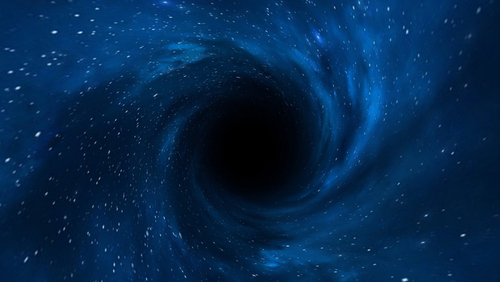
Enormous Black Hole Discovered — And It’s Close!
Earth’s cosmic neighborhood is a bit more crowded than previously known, and one of its newly discovered residents is lurking a bit too close for comfort. The European Space Agency recently detected a black hole the size of 33 suns, the largest found in our Milky Way galaxy.
The Gaia mission uncovered the giant some 590 parsecs from Earth — not an existential threat but still nearby for astronomical standards.
Scientists hailed the discovery as significant due to the enormous mass of the black hole. It also raised questions over current understanding of how these fascinating black holes are formed and developed.
Black holes were long theorized by physicists before their existence was proven. The gravitational pull of these areas is almost beyond comprehension, so much so that even light cannot escape its grasp.
Thus, the “black” hole.
As astronomical technology advanced, these “invisible” objects became detectable through their catastrophic interactions with other galactic objects such as nearby stars. According to the Debrief, which reported its discovery, Gaia BH3 does not have significant interaction with its neighbor.
The newfound object Gaia BH3 is the most massive known stellar black hole in our galaxy. It's also the second *closest* known black hole.
Don't worry, it can't eat us! But the discovery demonstrates just how much is still hidden in the dark.
https://t.co/0EppndSTWo pic.twitter.com/QXGWUTw2xX— Corey S. Powell (@coreyspowell) April 20, 2024
This lack of a cosmic connection with another celestial object made it a “dormant” black hole.
Instead, it was only detected by its obvious gravitational pull on the companion star. Tiny “wobbles” in the star were detected by the Gaia satellite.
Gaia collaboration member Pasquale Panuzzo celebrated the rarity of such a revelation. “No one was expecting to find a high-mass black hole lurking nearby, undetected so far. This is the kind of discovery you make once in your research life.”
The European Space Agency’s Gaia satellite maps the precise locations of billions of stars. Its precision made detection of the relatively nearby black hole possible.
The sheer size of Gaia BH3 presents a challenge for astrophysics. Stellar black holes in the Milky Way are typically no larger than 15 solar masses, or 15 times the size of the sun.
At 33 solar masses, it presents an issue to be resolved. Exactly how large was the object that collapsed in on itself and produced this giant?


